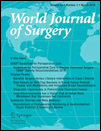Rapid Relief: Thyroidectomy is a Quicker Cure than Radioactive Iodine Ablation (RAI) in Patients with Hyperthyroidism
American Association of Endocrine Surgeons 39th Annual Meeting, May 6–8th 2018, Durham, North Carolina.
Abstract
Background
Time to hormonal control after definitive management of hyperthyroidism is unknown but may influence patient and physician decision making when choosing between treatment options. The hypothesis is that the euthyroid state is achieved faster after thyroidectomy than RAI ablation.
Methods
A retrospective review of all patients undergoing definitive therapy for hyperthyroidism was performed. Outcomes after thyroidectomy were compared to RAI.
Results
Over 3 years, 217 patients underwent definitive therapy for hyperthyroidism at a county hospital: 121 patients received RAI, and 96 patients underwent thyroidectomy. Age was equivalent (p = 0.72). More males underwent RAI (25% vs 15%, p = 0.05). Endocrinologists referred for both treatments equally (p = 0.82). Both treatments were offered after a minimum 1-year trial of medical management (p = 0.15). RAI patients mostly had Graves (93%), versus 73% of thyroidectomy patients (p < 0.001). Thyroidectomy patients more frequently had eye symptoms (35% vs 13%, p < 0.001), compressive symptoms (74% vs 15%, p < 0.001), or were pregnant/nursing (14% vs 0, p < 0.001). While the thyroidectomy patients had a documented discussion of all treatment modalities, 79% of RAI patients did not have a documented discussion regarding the option of surgical management (p < 0.001). Both treatment groups achieved an euthyroid state (71% vs 65%, p = 0.39). Thyroidectomy patients became euthyroid faster [3 months (2–7 months) versus 9 months (4–14 months); p < 0.001].
Conclusions
Thyroidectomy for hyperthyroidism renders a patient to an euthyroid state faster than RAI. This finding may be important for patients and clinicians considering definitive options for hyperthyroidism.




